27 Types of Green Caterpillars You Should Know About
If you’ve ever walked through your garden and noticed your plants’ leaves being slowly devoured, chances are you’re sharing your space with some unwanted guests—caterpillars! These fascinating creatures might seem harmless at first, but they can be quite the munchers. While most green caterpillars are harmless and non-toxic, a few can pack a nasty sting or even spit acid! Let’s dive into the world of these green leaf-eating larvae and explore the 27 types of green caterpillars you’ll find in gardens, along with their habits and unique characteristics.
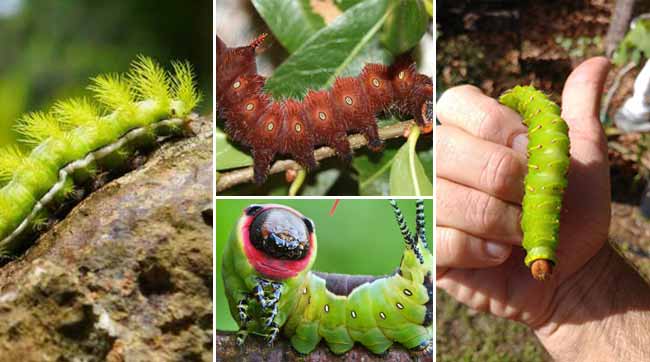
What Are Green Caterpillars?
Green caterpillars are the larval form of numerous butterfly and moth species, easily recognized by their green color—which helps them blend in with the leaves they feed on. This coloration acts as natural camouflage, offering protection from predators. Most of them are leaf-eaters and play a key role in plant-based food chains. While some remain small and discreet, others can grow quite large and are often closely tied to specific host plants. Eventually, they undergo a remarkable transformation through metamorphosis, emerging as adult butterflies or moths. Their appearance, diet, and behavior vary widely depending on the species.
Why It’s Worth Knowing Green Caterpillars
Green caterpillars are more than just garden visitors—they’re vital players in natural ecosystems. As prey for birds, wasps, and other animals, they help support biodiversity. Their presence can even serve as a sign of environmental health. Later in life, many turn into butterflies and moths, which are important pollinators for countless plant species. Learning about green caterpillars offers insight into insect development, makes biology more tangible, and aids gardeners and farmers in managing pests naturally. Beyond science, they also carry symbolic weight in many cultures, often representing transformation, growth, and renewal. Simply put, understanding these creatures connects us to the larger web of life.
1 Saddleback Caterpillar

This one’s hard to miss. The Saddleback Caterpillar has a bold green “saddle” marking on its back, surrounded by brown at both ends. But don’t be fooled by its eye-catching design—those spiny horns are venomous and can sting. It may look like a creature from a fantasy story, but it’s very real, and very painful if touched. Handle with care—or better yet, don’t handle it at all.
2. Winter Moth Caterpillar (Operophtera brumata)
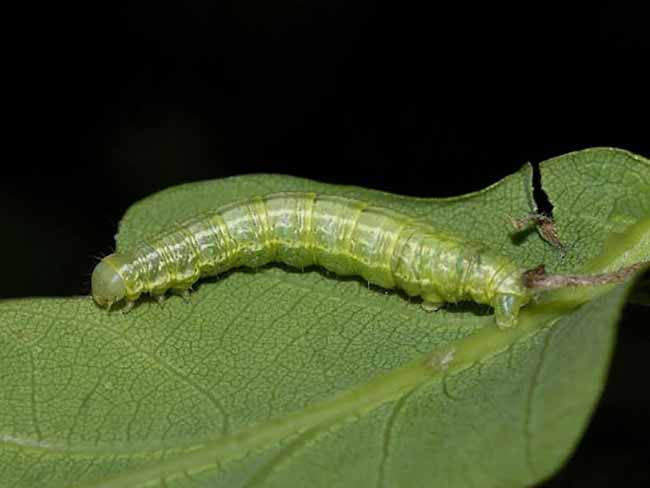
Is it Harmful to Humans? Mild irritation or rashes can occur if touched.

Winter Moth Caterpillars are notorious for their voracious appetite, particularly in early spring. Measuring only a few inches, these invasive caterpillars sport white stripes along their bodies and are commonly found on trees like beech, oak, and willow, as well as shrubs like raspberries and blueberries. Though they’re not toxic, their rapid consumption of leaves can leave a garden looking bare in no time.
3. Hickory Horned Devil Caterpillar

Massive, spiky, and bright green with terrifying red horns, this caterpillar looks like a monster—but it’s all show. Despite its fearsome appearance, the Hickory Horned Devil is completely harmless. It’s one of the largest caterpillars in North America and eventually transforms into the regal Royal Walnut Moth. Finding one feels like discovering a tiny dragon in your backyard.
4. Imperial Moth Caterpillar

As it matures, the Imperial Moth caterpillar becomes a bulky, green-brown giant with long, velvety hairs and faint yellow lines. It feeds on a variety of trees, including oak, pine, and sweetgum. Though not flashy in color, its sheer size and texture give it a prehistoric look. This caterpillar eventually turns into the large and beautiful Imperial Moth, with golden wings speckled in brown.
5. Imperial Moth Caterpillar (Eacles imperialis)
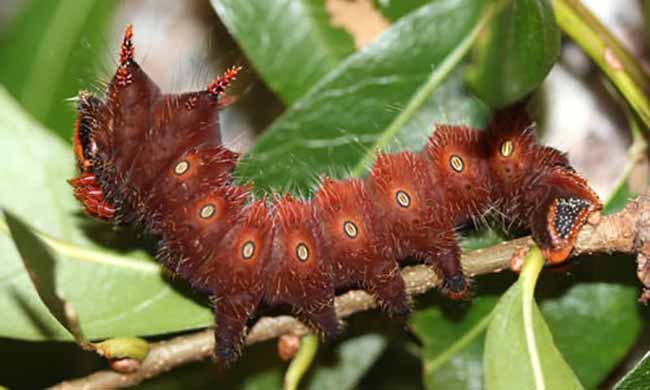
Is it Harmful to Humans? No, it’s completely harmless.
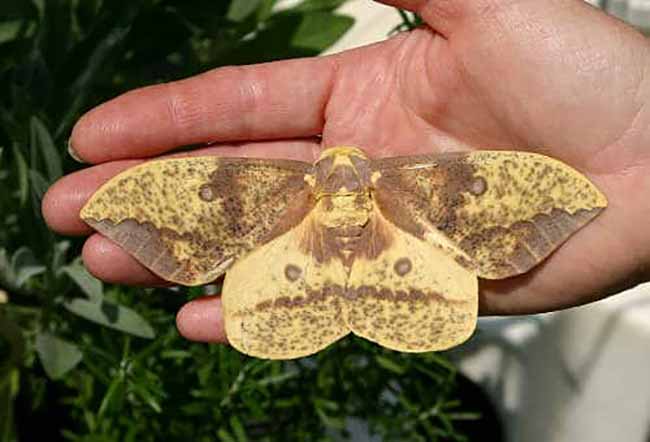
The Imperial Moth caterpillar is a giant compared to most other species on this list. While it’s large and impressive in appearance, it poses little risk to plants unless present in large numbers. If you spot one or two, don’t be alarmed! They’re a temporary guest in your garden, transforming into a beautiful, large moth. A sight to behold, these caterpillars are typically found munching on trees like sweetgum and birch.
6. Rough Prominent Moth Caterpillar (Nadata gibbosa)


Is it Harmful to Humans? No harm to humans, although it’s best to avoid direct contact.
This caterpillar is easily recognizable by the yellow or pale white spots that dot its green body. Found primarily on oaks and birches, it grows into a small moth with light brown, compact wings. Despite its rather striking appearance, it’s not dangerous and usually doesn’t cause significant damage unless present in large numbers.
7. Cabbage Looper Caterpillar (Trichoplusia ni)


Is it Harmful to Humans? No, but its presence can be harmful to your crops.
A common sight in American gardens, the Cabbage Looper is infamous for its appetite. These caterpillars will happily feast on cabbage, kale, and other leafy plants. They consume more than three times their body weight in a single day, making them a nuisance for gardeners. Though harmless to humans, they can devastate crops if not controlled.
8. Hackberry Emperor Caterpillar (Asterocampa celtis)


Is it Harmful to Humans? No, it’s perfectly safe.
Known for its preference for hackberry trees, this caterpillar can be found feeding on leaves, sap, and even rotting fruit. It’s a bit of an opportunist, appearing near forest glades or riverbanks. While it doesn’t cause major damage to plants, it can be a nuisance if populations get too large. But fear not—it won’t harm humans.
9. Angle Shades Moth Caterpillar (Phlogophora meticulosa)

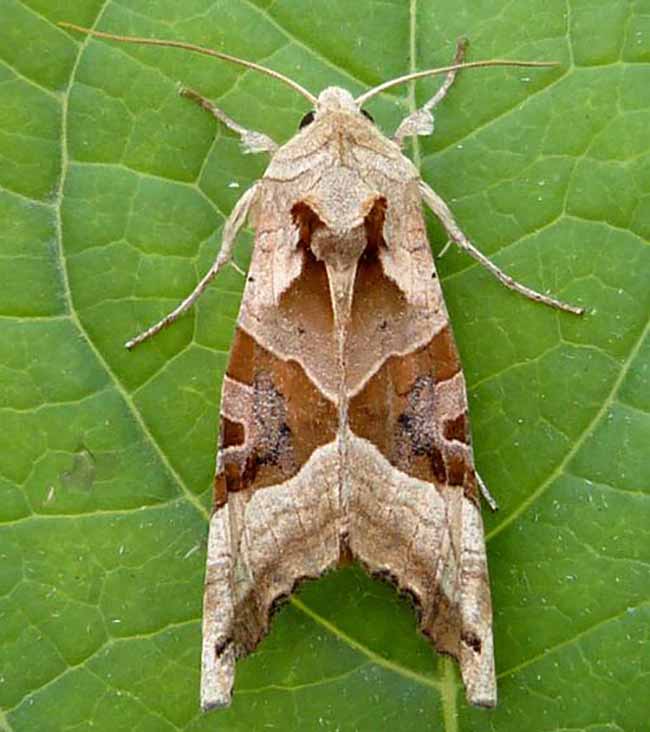
Is it Harmful to Humans? No, it is completely non-threatening.
Though small in size, the Angle Shades Moth caterpillar is a master of disguise. It typically feeds on flowers and is found year-round. When it reaches the pupating stage, it buries itself in the soil, later transforming into a moth with wings that resemble the angles of a triangle—hence the name “Angle Shades.”
10. Hickory Horned Devil Moth Caterpillar (Citheronia regalis)


Is it Harmful to Humans? No, although it has a somewhat intimidating appearance.
This caterpillar is large and striking, with bright green body segments and vivid orange spines. Despite its somewhat devilish appearance, it poses no threat to humans and is not toxic. It prefers to hide in the dark, coming out only at night. After its pupation, it becomes a gorgeous moth with orange and black wings.
11. Cecropia Moth Caterpillar (Hyalophora cecropia)


Is it Harmful to Humans? Yes, it can release venomous droplets that cause irritation.
One of the largest caterpillars in North America, the Cecropia Moth caterpillar is beautifully colorful, with tubercles that range from yellow to red and blue. It’s not harmful to plants unless found in large numbers, but it’s best to avoid handling it directly, as the caterpillar can release irritating fluids.
12. Rustic Sphinx Moth Caterpillar (Manduca rustica)


Is it Harmful to Humans? No.
With a horn-like tail and a penchant for creating a dramatic “Sphinx pose,” this caterpillar has a distinct look. Its zig-zag black and white markings make it stand out among others. Despite its intimidating horn, it’s harmless to humans and serves as an interesting addition to your garden ecosystem.
13. Cabbage White Butterfly Caterpillar (Pieris rapae)
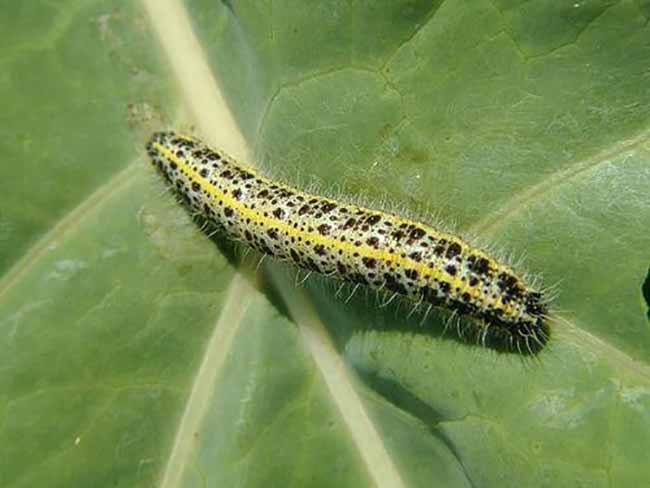

Is it Harmful to Humans? No.
Although it’s harmless to humans, the Cabbage White Butterfly caterpillar is a notorious pest in the garden. It’s commonly found on cabbage, broccoli, and other cruciferous plants, where it can quickly decimate crops. But fear not, once it matures, it becomes a lovely white butterfly.
14. European Puss Moth Caterpillar (Cerura vinula)
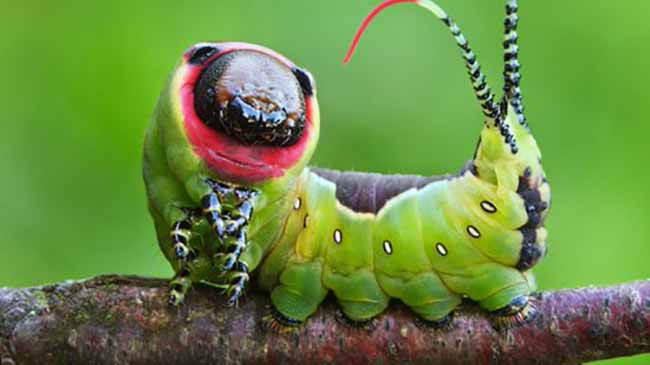

Is it Harmful to Humans? Yes, it spits venom.
The European Puss Moth caterpillar is as fascinating as it is beautiful. With its unique, furry appearance and two spiny projections at the tail, it can defend itself by expelling venom. Despite this, it’s mostly harmless if left undisturbed. It’s a stunning creature in both its caterpillar and adult moth forms.
15. Luna Moth Caterpillar (Actias luna)

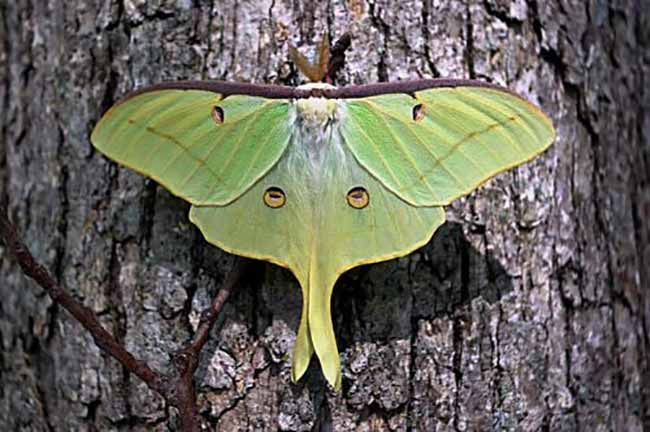
Is it Harmful to Humans? No.
This charming caterpillar, with its soft green body adorned with orange and red spots, transforms into one of the most visually striking moths. The Luna Moth’s bright lime-green wings and graceful form make it a favorite among moth enthusiasts.
16. Copper Underwing Moth Caterpillar (Amphipyra pyramidea)

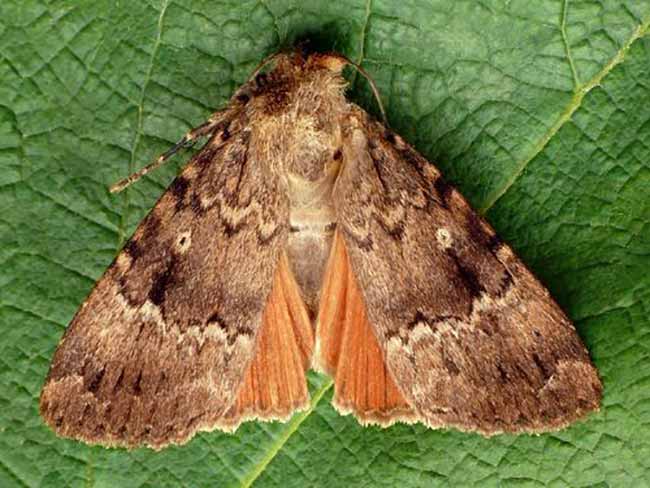
Is it Harmful to Humans? No.
The Copper Underwing Moth caterpillar starts life as a pale green, but as it matures, it darkens into a deep, almost black hue. With its peak-shaped hump, it eventually becomes a moth with a dark brown and black appearance, providing it excellent camouflage.
17. White-Lined Sphinx Moth Caterpillar (Hyles lineata)


Is it Harmful to Humans? No.
This caterpillar, often referred to as the “hummingbird moth” due to its bird-like wings, can be spotted on various plants. Its vibrant green body is decorated with orange and yellow stripes, making it a colorful addition to any garden.
18. Tiger Swallowtail Butterfly Caterpillar (Pterourus glaucus)

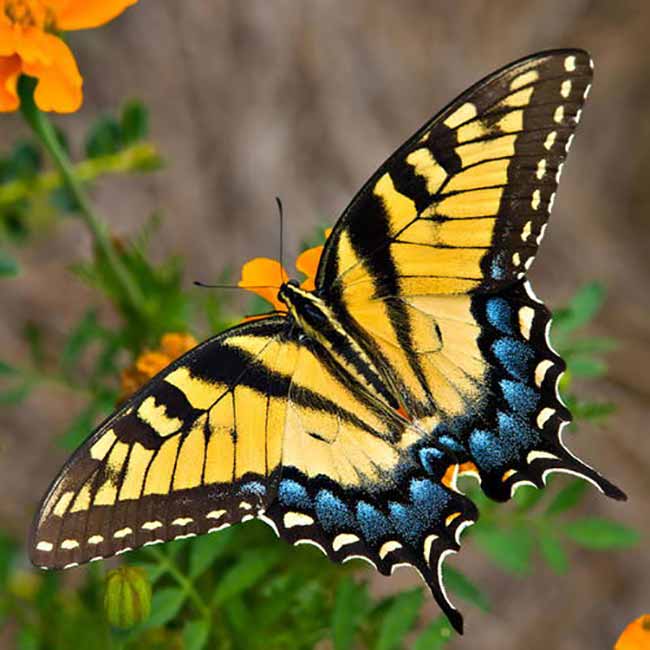
Is it Harmful to Humans? No.
The Tiger Swallowtail Butterfly caterpillar might be best known for its transformation into a stunning butterfly with distinctive black and yellow stripes. While harmless to humans, its large size and defensive coloration make it a striking presence in any garden.
19. Emperor Moth Caterpillar (Saturnia pavonia)


Is it Harmful to Humans? Yes, contact can cause skin irritation.
This caterpillar is a visual marvel, with its bright green body accented by bold black rings. Upon pupation, it transforms into a magnificent moth with orange hindwings and gray forewings, complete with eye spots that make it one of the most eye-catching moths around.
20. Black Swallowtail Butterfly Caterpillar (Papilio polyxenes)


Is it Harmful to Humans? No.
Known for its striking black body with orange and blue markings, the Black Swallowtail Butterfly caterpillar is a favorite among butterfly lovers. Its bold markings act as a warning to predators, and it can release a foul odor to deter threats.
21. Genista Broom Moth Caterpillar (Uresiphita reversalis)


Is it Harmful to Humans? No.
This caterpillar’s vibrant green body with bright yellow markings is not only easy to spot but also serves as a warning to potential predators. It feeds on pea plants and honeysuckles and is often seen on plants in gardens and fields.
25. Tomato Hornworm Caterpillar (Manduca sexta)
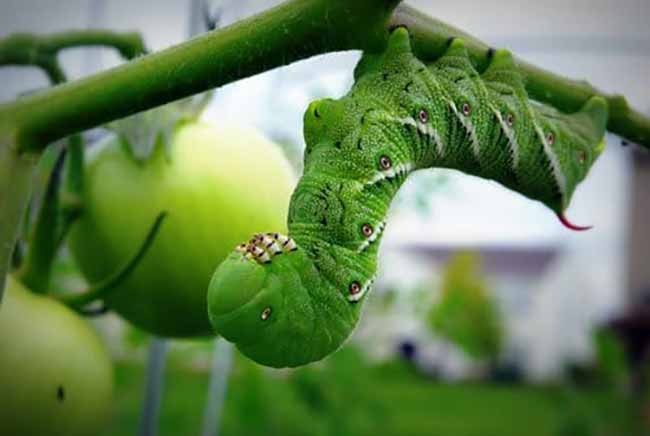
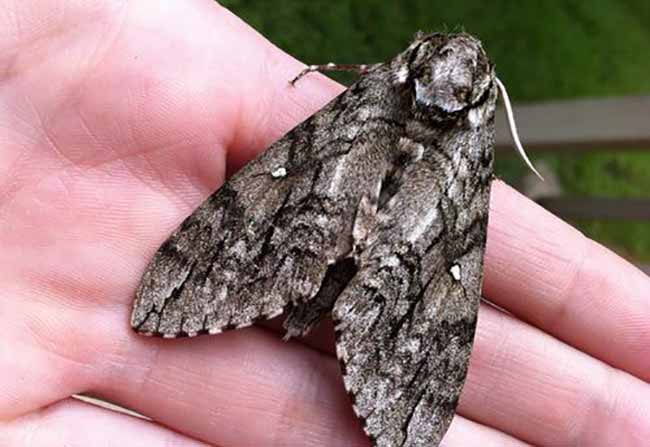
Is it Harmful to Humans? No.
Known for its impressive camouflage, the Tomato Hornworm is a real garden troublemaker, especially on tomato plants. Although it can be difficult to spot, once you find it, you’ll see just how much damage it can do to your crops. But in its adult form, it transforms into a striking black-grey moth.
26. Io Moth Caterpillar (Automeris io)

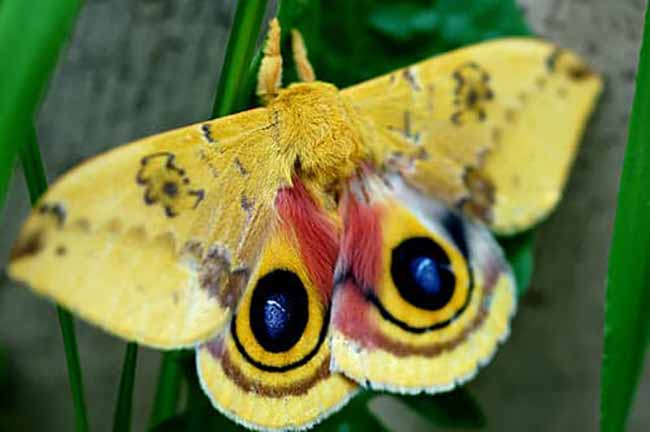
Is it Harmful to Humans? Yes, it’s covered in poisonous spines.
The Io Moth caterpillar begins its life as a striking orange larva and eventually turns a pale green with white and red bands. Its body is lined with venomous spines that can cause painful stings and skin reactions. Admire it from afar—it’s beautiful but best left untouched.
27 Emerald Moth Caterpillar
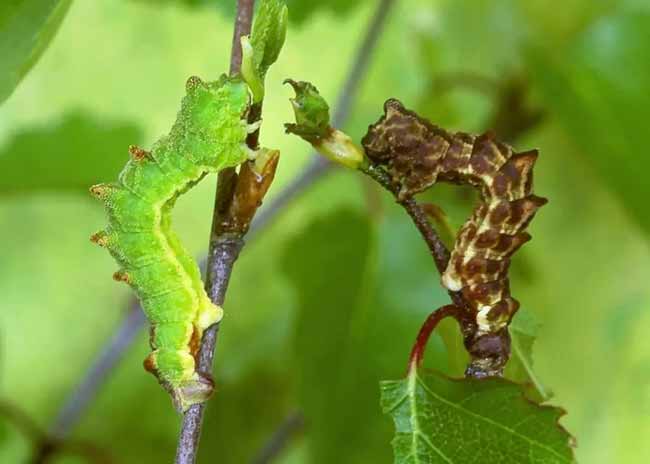
This tiny caterpillar looks like a fragment of a fresh green leaf. Its pale green body blends beautifully with the foliage it feeds on, mostly found on shrubs and deciduous trees. While not very flashy, its ability to stay almost invisible to predators is impressive. This camouflage is its greatest strength—and your biggest challenge if you’re trying to spot one.
How to Identify Green Caterpillars
Identifying green caterpillars requires a close look at their physical features and behavior, as each species carries its own subtle clues. Though green is the dominant color, many caterpillars display distinctive patterns—such as stripes, spots, or even contrasting bands—that serve as camouflage or warning signals. Some are adorned with vivid lines of white or black, while others blend in more subtly with leaf tones.
Size and shape vary widely: certain species like the Fall Armyworm are stout and slightly flattened, while others such as inchworms are long, narrow, and arch their bodies as they move. Texture can also reveal a lot—some caterpillars have smooth, soft bodies, others are coated with bristles or equipped with sharp spines, like the venomous Saddleback. The head region may hold additional identifiers, from false eyespots to striking coloration, as seen in the Silver-Spotted Skipper caterpillar with its orange head and mimicry defenses.
Movement offers more hints—looping motions in inchworms, for example, are a signature trait. Feeding behavior and plant preferences can narrow down identification even further: Monarch caterpillars are rarely seen away from milkweed, while Tomato Hornworms are commonly found devouring tomato leaves. Noting whether they are active during the day or night can also help distinguish between look-alike species.
With a combination of visual details and behavioral cues, even amateur gardeners can begin to recognize the unique identity of each green caterpillar they encounter.



